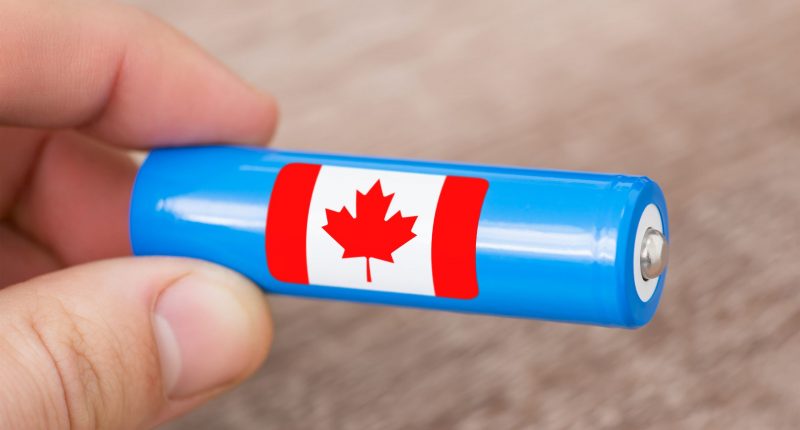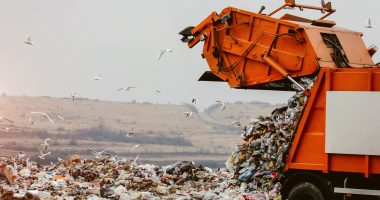The North American continent is in a bit of a quandary when it comes to lithium.
On one hand, it has an EV (electric vehicle) market which is hungry for lithium chemicals, not to mention a growing suite of mining projects which are able to deliver raw spodumene ore. On the other hand, the continent has no conversion plants to turn this ore into the chemical required – a battery-grade lithium carbonate.
The demand is intense, with more than 20 major manufacturers planning to deploy battery capacity of up to 1000 GW (gigawatts) by 2028, with around 800,000 tonnes of lithium chemicals needed to achieve this – and only 100,000 tonnes slated for delivery by that same year.
The latter number could contract even more, given news earlier this month that Piedmont Lithium had terminated its application for a debt package from a US-government loan program and would be scaling back its expansion plans across two continents, driven by falling lithium prices.
But the continent’s mining projects are plentiful, especially in Canada, where multiple lithium plays scattered across Quebec and Ontario have propelled the country into top spot in BloombergNEF’s Global Lithium-Ion Battery Supply Chain Ranking.
With many countries – particularly in the West – attempting to decouple from Chinese lithium chemical supply (which makes up about 95% of the market), while also facing the problem of technical and startup issues experienced by many conversion plants, what is needed now is fresh thinking and steady hands.
Building on prior knowledge
And this is where Lithium Universe Ltd’s (ASX:LU7) ‘dream team’ comes in.
Guided by former Galaxy Resources’ managing director Iggy Tan, the executive and management team at Lithium Universe is aiming to bring technical knowledge gained at the former company – which built a lithium conversion plant at Jiangsu in China, and a mining operation from Mt Cattlin in Western Australia – to bear in the North American context.
At the centre of the company’s plans is the development of a lithium refinery in Bécancour, Quebec, using the same technology – and indeed the same supplies, same equipment and same flow sheet – as that of the Jiangsu plant.
The plant would be situated in strong territory for exploration and development projects, as the nearby James Bay region contains more than 40 companies dedicated to exploration of the critical mineral, and an estimated mineral resource of more than 500 million tonnes (at more than 1% lithium oxide) across 8 projects.
Now is the time
Mr Tan – who is executive chair of Lithium Universe – said the pressing need for lithium chemicals in North America was fuelling a range of initiatives to break the reliance on Chinese supply.
“The development of downstream supply chains, including EV and battery plants, is just beginning in North America,” he said.
“This process has brought supply chain security issues into sharp focus. In response, governments are now encouraging and incentivizing domestic supply chains through grants, such as those provided by the Inflation Reduction Act (IRA).
“Additionally, measures like banning Chinese ownership and raising tariffs on lithium and battery-related products have been implemented to enhance supply chain resilience.”
However, he added that with setbacks evidenced among some lithium conversion projects – such as North American Lithium and Nemaska – there has been some hesitation about pursuing and investing in such initiatives.
“The primary difficulty lies in adapting Chinese technology and culture to a Western context,” Mr Tan said.
“Chinese processes tend to be batch-oriented, while Western technology favours continuous processes. At Jiangsu, we developed a continuous process based on well-established, decades-proven Western chemistry.”
Getting stakeholders on board
In the June quarter, executives from Lithium Universe visited Canada to meet with key stakeholders, including government officials and lithium exploration company representatives in relation to the Bécancour plant, which is progressing through a definitive feasibility study (DFS).
As part of this study, Lithium Universe completed two environmental field studies at the site during the same quarter.
CEO Alex Hanly said lithium companies in the area had been pleased to hear about the development of a processing hub in their vicinity.
“The existing and development spodumene projects in Canada are fully aware of the large gap in their downstream supply chain,” he said.
“We have spoken to around 40 different companies across Quebec and Ontario at different stages of project and all have encouraged the Company to carry on its bold strategy in Canada.”
He added that strong support had also been evident among political stakeholders at the local, provincial and federal level.
“The political environment is a very strong tailwind for the company as the North American and European Union attempt to decouple supply chains from China,” Mr Hanly added.
“Specifically, the Bécancour Industrial Park is purpose-built to host critical mineral-focused companies and battery manufacturers to enable the green transition.
“The intersection of key logistics routes and cost effective green hydro power at around 2.6 US cents positions Bécancour park exceptionally well to host international investment and expertise.”
These developments are framed by the Canadian government’s C$3.8 billion Critical Minerals Strategy – released in 2022 – which explains the country’s plan to become the premier global supplier of critical minerals for green technologies and reduce reliance on foreign mineral inputs.
Going back to a successful technology story
Mr Tan joined other members of the ‘dream team’ – including Mr Hanly, Dr Jingyuan Liu and Mr Patrick Scallan – on a visit to China during the June quarter, where the focus was on obtaining industry feedback and validating design variables.
Central to this were the visits to three lithium refinery facilities in the provinces of Shandong, Hubei, and Sichuan.
Looking back on the achievements involved in constructing and operating the Jiangsu Lithium Carbonate Plant – which he had overseen for Galaxy, as its General Manager of Development and Technologies – Dr Jingyuan Liu said it had represented a breakthrough for lithium conversion.
“When Jiangsu LC plant was developed, there was no fully automated and continuously operated lithium conversion plant – all the Chinese conversion plants were batch and in small scale,” he said.
“The information on the LC plant operation was fragmented and inaccurate. Even some Chinese technical people from LC producer doubted if the continuous process works.
“However, we made it work by extensive in-house lab tests and then directly scaled up to the commercial plant after the construction of the plant. The plant now produces around 20 ktpa lithium carbonate, 18% more than design throughput and the quality and consistency are the best in the world.”
Crucially, Lithium Universe would be leveraging this achievement into its plans for the Bécancour project in Quebec.
“The lessons learnt in Jiangsu LC plant will be reflected in the plant design at Bécancour Lithium Refinery,” Dr Liu said.
“The operational experiences will also be transferred. These will greatly reduce the risks of Bécancour in schedule and budget of the plant construction, as well as success in commissioning, ramping up and operation.”
The promise of Canadian lithium
Progressing definitive feasibility across the Bécancour project remains Lithium Universe’s main focus, and other recent work for this has included an application of 22.5 megawatts (MW) of green power for the lithium refinery, and test work which has shown it capable of processing spodumene from any part of the world.
Although there have been multiple significant discoveries throughout the transatlantic region, including Brazil, Mali and Ghana; from a tier 1 operational environment, it does not get better than Canada. Quebec is now host to Patriot Battery Metals’ Corvette, Arcadium’s Whabouchi and Galaxy projects, Sayona’s NAL and more recently, Winsome Resources’ Adina discovery.
Patrick Scallan stated that the territory’s projects in focus were exciting for a range of reasons, including their history of good orebody discoveries, power availability and price, road and rail infrastructure, and supportive First Nation and government enterprises.
A flexible processing operation to help bridge the lithium gap
With these projects in-hand, and a suite of surrounding lithium companies which can provide material for the Bécancour refinery, Lithium Universe is a strong contender to solve the ‘lithium gap’ puzzle.
Recent testing of the processing design – which was done at the Linyi University Lithium Research Centre in China – showed that a second batch of the final chemical met stringent battery grade specs, something which is rarely achieved with first pass programs.
Dr Liu said these results boosted expectations of what the refinery could produce.
“We have collected almost all the commercial spodumene concentrates on the market for a comprehensive test program,” he said.
“All the tests completed so far indicate that the concentrates can produce above battery grade lithium carbonate using our process adopted in Bécancour.
“The plant has the flexibility to process almost all kind of spodumene concentrate on the market.”
Lithium Universe shares have been trading at 1.3 cents.









